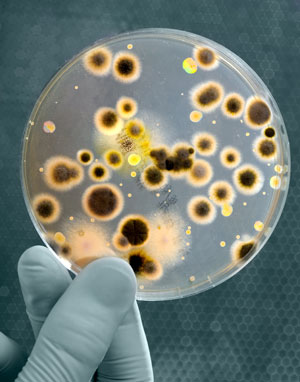Background to Legionnaires disease
Legionnaires disease is a potentially fatal form of pneumonia which can affect anybody, but which principally affects those who are susceptible because of age, illness, immunosuppression, smoking, diabetic etc. It is caused by the bacterium LEGIONELLA PNEUMOPHILA and related bacteria. Legionella bacteria can also cause less serious illnesses which are not fatal or permanently debilitating.

Legionnaires Disease was first identified following a large outbreak of pneumonia among people who attended an American Legion Convention at a Hotel in Philadelphia in 1976, 182 people contracted the disease, of which 29 died. A previously unrecognised bacterium was isolated from lung tissue samples which was subsequently named LEGIONELLA PNEUMOPHILA.
The incubation period is between 2 and 10 days. Not everyone exposed will develop symptoms of the disease and those that do not develop the 'full blown' disease may only present with a mild flu-like infection. Infection with legionella bacteria can be fatal in approximately 12% of reported cases. This rate can be much higher in a more susceptible population. It is wideley reported that at present, cases of legionaires disease are under reported due to insufficient testing of patients suffering with pneumonia type illnesses.
Legionella bacteria are common and can be found naturally in environmental water sources such as rivers, lakes and reservoirs, usually in low numbers. Legionella bacteria can survive under a wide variety of environmental conditions and have been found in water at temperatures between 6 and 60°C. Water temperatures in the range 20°C to 45°C seem to favour growth. The organisms do not appear to multiply below 20°C and will not survive above 60°C. They may however remain dormant in cool water and multiply only when water temperatures reach a suitable level.
Legionella bacteria also require a supply of nutrients to multiply. Sources can include, for example, commonly encountered organisms within the water system itself such as algae, amoebae and other bacteria. The presence of sediment, sludge, scale and other material within the system, together with biofilms, are also thought to play an important role in harbouring and providing favourable conditions in which the legionella bacteria may grow. Bioflms, sludge and scale can protect legionella bacteria from temperatures and concentrations of biocide that would otherwise kill or inhibit these organisms if they were freely suspended in the water.
As legionella bacteria are commonly encountered in environmental sources they may eventually colonise manufactured water systems and be found in cooling tower systems, hot and cold water systems and other plant which use or store water. To reduce the possibility of creating conditions in which the risk from exposure to legionella bacteria is increased, it is important to control the risk by introducing measures which:
- Do not allow proliferation of the organisms in the water systems; and
- reduce, so far as is reasonably practicable, exposure to water droplets and aerosols.